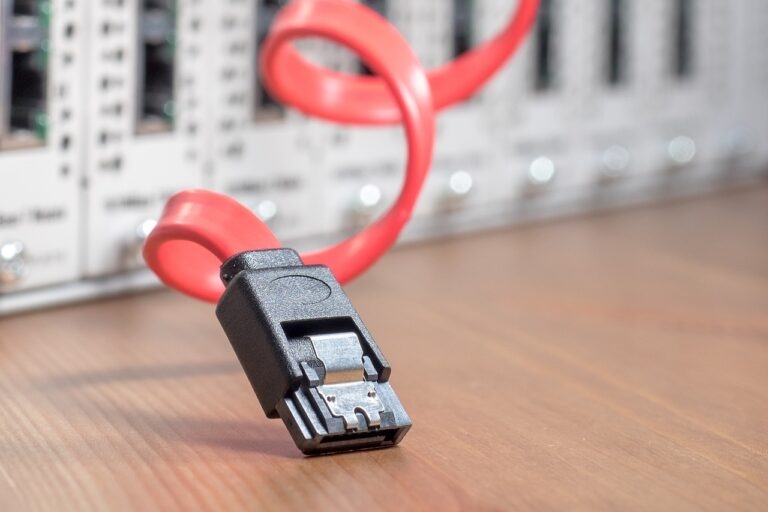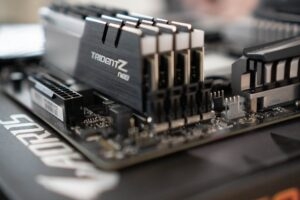
Technology is changing at a rapid pace to adapt to modern-day requirements. Especially in the era where networking plays a key role in data exchange, technology has changed a lot.
The transmission of data is done by means of light. The type of optical fiber used in networking plays a huge role in the speed and bandwidth of the data exchange.
Cat5 and Cat6 are the most commonly used network cables that help to connect computers with modems, servers, switches, etc. These cables are designed to meet the higher bandwidth requirements in the IT industry.
In this article, we have provided key differences between Cat5 and Cat6 cables.

Cat5 Ethernet Cable
This cable consists of four twisted copper wire pairs that end with an RJ-45 connector. This connector is plugged into an ethernet jack.
This 5th generation cable has been popular since 1995 and can also be found in STP (Shielded Twisted Pair) variety. One of the key features of this cable is that it offers great protection against signal interference.
This ethernet cable is capable of transferring data at 100 MHz bandwidth and 100 Mbps speed. However, in shorter distances, this cable can also run up to 2.5GBASE-T.
The maximum recommended length to carry the data through the Cat5 cable is 100 meters. In case you have a hardwired PC, then the Cat5 cable is the one that is connecting to it.
Cat5e Ethernet Cable
The ‘e’ in Cat5e stands for enhanced. This cable can handle speeds up to 1000Mbps and a bandwidth of 350MHz. Compared to the standard Cat5 cables, the 5e cables are 10X faster and also comply with the ANSI/TIA-568 standards.
People with less media consumption at home might not see any drastic difference in the speeds. However, IT companies that require a large data transfer might see a huge difference in speeds.
Cat6 Ethernet Cable
The Cat6 ethernet cable also comes with four twisted copper wires. This cable is capable of transmitting data at 250 MHz of bandwidth. This cable is best suitable for heavy media consumption and high-definition video streams. For extended lengths, this cable can handle speeds of up to 10 Gigabits.
The only downside of this cable is that it lacks flexibility for residential use. It is only an ideal choice to use for industrial purposes.
Cat6a Ethernet Cable
The ‘a’ in Cat6a stands for augmented. This cable is best suitable for heavier and thicker constructions. The individual copper wire pairs have metal shielding to reduce the interference of signals.
The Cat6a cable supports speeds of up to 10 Gbps and a maximum bandwidth of 500MHz. It also has backward compatibility with the 6a and 6e cables.
Difference Between Cat5 and Cat6
Bandwidth
Both these wires use twisted pairs of copper wires for the ethernet. However, both of these cables vary a lot in terms of transmission speeds. The Cat5 cable can go up to a maximum speed of 100Mbps, while the Cat6 can go up to 10 Gbps.
Frequency
Cat5 and 5e are capable of operating at a maximum of 100MHz frequency, while Cat6 is capable of operating at a maximum of 250 MHz frequency. This is faster compared to the Cat5 models. Cat6 complies with the 10GBASE-T standards, while Cat5e complies with the 1000Base-T/TX standard.
Backward Compatibility
Cat6 is backward compatible with the Cat5e and Cat5 models. Also, all the latest infrastructures (nearly 90%) rely on Cat6 cables for better data transmissions.
Safety Margins
Cat6 uses a thick-gauge plastic case that helps it in covering long distances with no signal interference and crosstalk issues, which is not the case with the Cat5 cables. Cat5 is not capable of handling the crosstalk issues effectively. Moreover, Cat5 is only helpful for covering shorter distances.
Future
Cat6 is compliant with the latest infrastructure standard specifications. Hence, this cabling system will be there for many years to come. On the other hand, Cat5 is outdated and does not support large-scale application requirements.
Installation
Cat5 is best for residential deployment, while Cat6 cables are best for large-scale industrial installations.
| Cat5 | Cat6 | |
|---|---|---|
| Bandwidth | 100 Mbps | 10 Gbps |
| Frequency | 100 Mhz | 250 Mhz |
| Back Compatibility | No | Yes |
| Safety Margin | None | Thick-gauge Plastic Case |
| Usability | Residential | Industrial |
Conclusion
Cat5 is not ideal for a business user as the data speeds are not maintained at longer distances, and the speeds are capped at a maximum of 100Mbps. On the other hand, Cat6 is much better in terms of transmission speeds (up to 10 Gbps) and maintains the transfer speeds, even at longer distances. To avoid crosstalk issues, it is recommended to go with the Cat6 cable system.
Directly in Your Inbox









